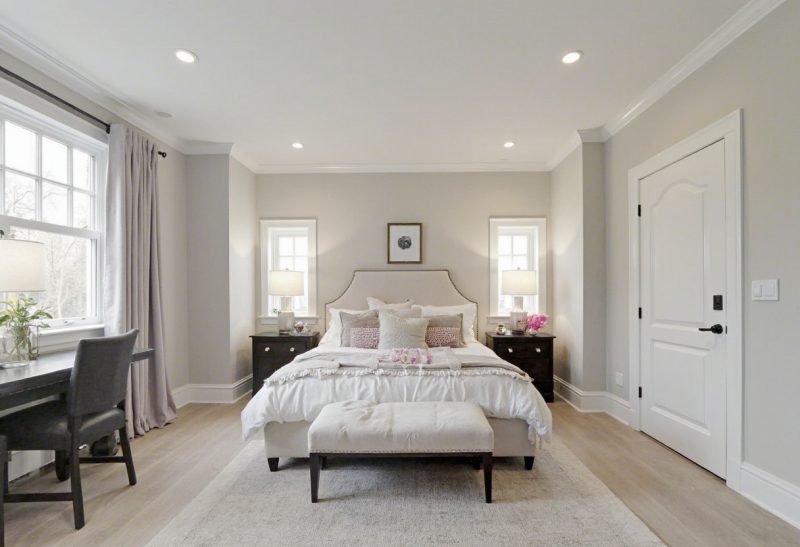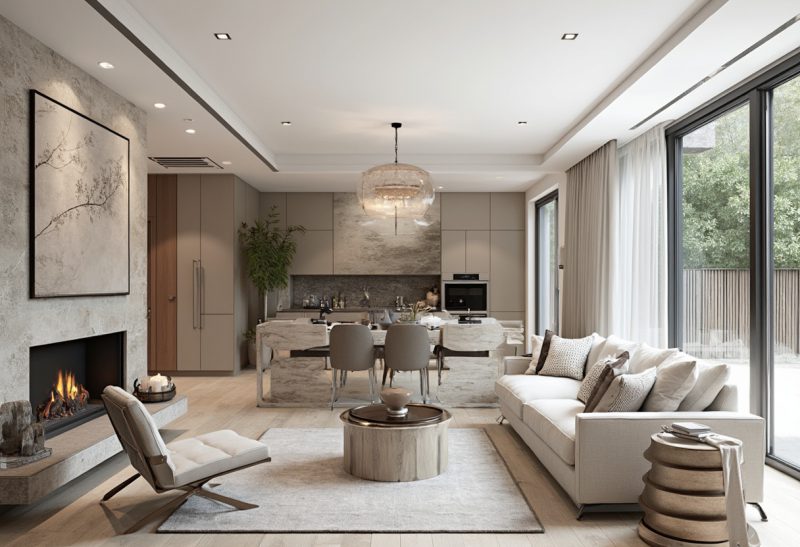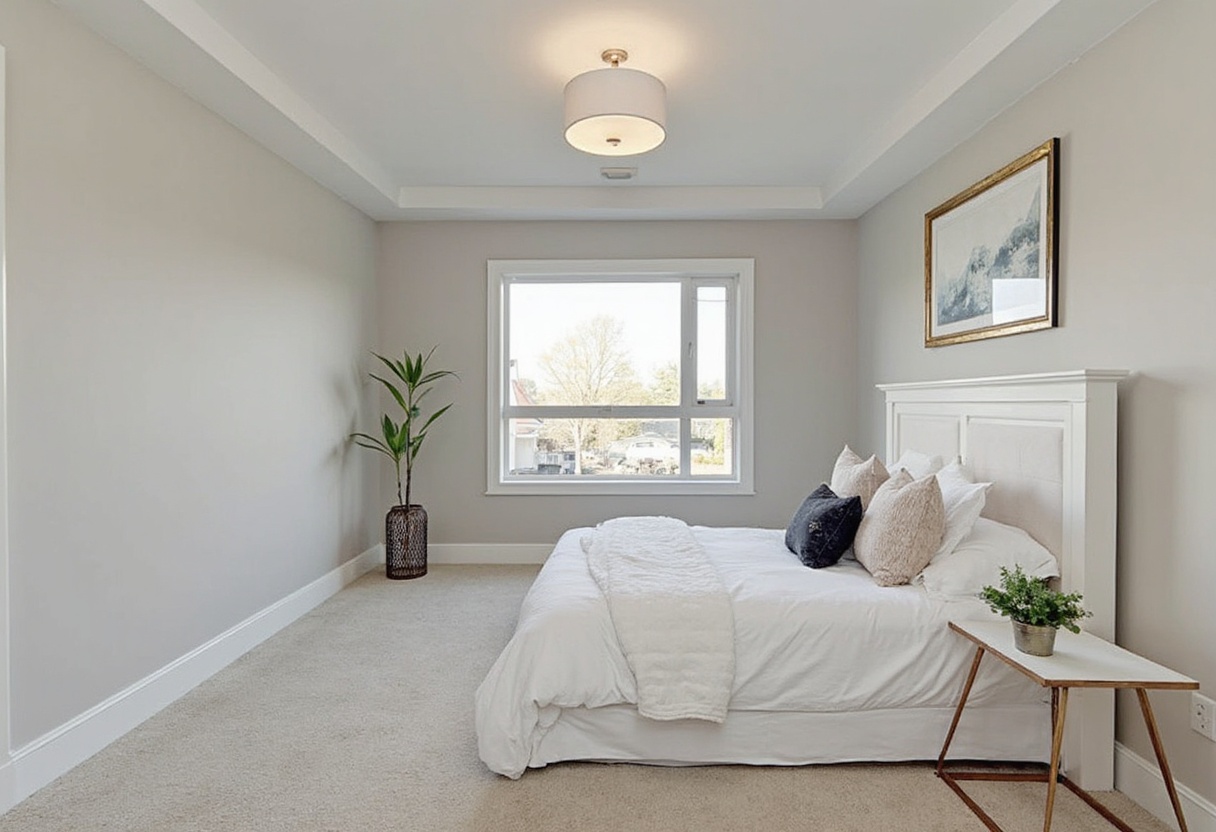The first and most critical step in designing a room addition is identifying your specific needs and goals. Why are you considering a room addition, and what do you hope to achieve with the new space?
Identifying the Purpose of the Room Addition
Consider how you plan to use the new space. Some common types of room additions include:
- Bedroom Addition: For growing families, an extra bedroom can provide much-needed space. It’s also a good option for creating a guest room or a private retreat.
- Kitchen Extension: Expanding a kitchen can give you more room for cooking, dining, and entertaining. It can also allow you to add modern appliances or a kitchen island.
- Home Office: With more people working from home, adding a office space can increase productivity and provide a professional environment.
- Family Room or Living Room: These spaces allow for more family time and entertainment. A new living room can serve as a relaxation area or a space for social gatherings.
By clearly defining the purpose of the addition, you’ll be able to make informed decisions about the design, layout, and materials.
Considering Future Needs
It’s important to think not only about your current needs but also how they may change in the future. For example, if you plan to sell your home in a few years, consider what types of room additions will add the most value. If your family is growing, you may want to design a space that can be easily converted into a bedroom or living area later on.
2.Evaluating Your Property and Existing Structure
Understanding Zoning Regulations and Setbacks
Toronto has specific zoning laws that dictate how much you can build on your property and where the addition can be located. These regulations will influence the size and placement of your room addition. Common zoning restrictions include:
- Setbacks: The distance between your home and the property line. Toronto’s zoning bylaws specify minimum setback requirements, which may limit how far you can extend your home.
- Lot Coverage: The percentage of your property that can be covered by buildings. This is especially important in dense urban areas like Toronto.
- Height Restrictions: If your room addition includes a second story, you’ll need to check the height restrictions for your neighborhood.
Consult with a local architect or contractor familiar with Toronto’s zoning regulations to ensure your design complies with all bylaws.
Inspecting Your Home’s Structure
The condition of your home’s foundation, walls, and roof will determine how the new addition can be built. A thorough inspection will reveal any structural issues that need to be addressed before construction begins. You’ll need to assess whether the foundation can support the weight of the addition or if reinforcements are required.
If you’re planning a second-story addition, the integrity of the existing walls and roof will be key factors. Reinforcing or upgrading these elements may be necessary to ensure the safety and stability of the new space.
3.Working with an Architect or Designer
Designing a room addition is a complex task that requires professional expertise. Working with an architect or designer will help you create a detailed and functional plan that aligns with your vision.
Choosing the Right Professional
When selecting an architect or designer, look for someone with experience in residential home additions, particularly in the Toronto area. They should be familiar with local building codes, zoning bylaws, and construction practices. Review their portfolio and ask for references to ensure they have a track record of successful projects.
Collaborating on the Design
Your architect or designer will help you refine your ideas and translate them into detailed plans. During the design phase, you’ll need to:
- Define the Layout: Decide on the size and shape of the room addition, taking into account how it will connect to the existing home. Consider the flow of the space and how natural light will enter the room.
- Select Materials: Work with your architect to choose materials that complement your existing home. Whether it’s matching brick, siding, or roofing, continuity between the old and new parts of the house is essential for a cohesive look.
- Plan for Utilities: If your room addition includes plumbing, heating, or electrical work, the architect will need to incorporate these systems into the design.
Your input is crucial during the design phase. Don’t be afraid to ask questions or make suggestions—after all, this is your home, and the final result should reflect your needs and preferences.

4.Budgeting for the Room Addition in Toronto
A well-designed room addition can be a substantial financial investment, so it’s important to set a realistic budget early in the process. The cost of a room addition in Toronto can range from $100,000 to $300,000, depending on the size, complexity, and materials used.
Estimating Costs
Several factors will influence the cost of additions, including:
- Size of the Addition: Larger additions will require more materials and labor, which increases the cost.
- Type of Materials: High-end materials such as hardwood floors, custom windows, or premium roofing will drive up the budget. Conversely, choosing more cost-effective materials can help reduce expenses.
- Labor Costs: Labor makes up a significant portion of the overall budget. Contractors, electricians, plumbers, and other professionals will charge for their time and expertise.
- Permits and Inspections: In Toronto, you’ll need to budget for building permits and inspections. Permit fees are based on the scope of the project and can vary.
To avoid financial surprises, be sure to include a contingency fund in your budget. This extra buffer (typically 10-20% of the total budget) will cover unexpected expenses such as material price increases or unforeseen structural repairs.
Financing Options
If you don’t have the full amount available upfront, consider financing options such as:
- Home Equity Loans: These loans allow you to borrow against the equity in your home and typically offer lower interest rates than other financing options.
- Personal Loans: Unsecured personal loans can be an option, but they often come with higher interest rates.
- Construction Loans: These loans are designed for home renovation projects and are released in stages as the work progresses.
5.Incorporating Energy Efficiency into Your Design
In today’s world, energy efficiency is a priority for many homeowners. Incorporating energy-efficient features into your room addition can reduce your utility bills and increase your home’s resale value.
Insulation and Windows
Proper insulation is key to maintaining a comfortable temperature in your new room. Invest in high-quality insulation for the walls, ceiling, and floors to prevent heat loss in the winter and keep the room cool in the summer.
Energy-efficient windows, such as double or triple-glazed windows with Low-E coatings, can also help regulate indoor temperatures. They reduce heat transfer and block UV rays, which helps to maintain a comfortable environment and protect your furniture from fading.
Heating and Cooling Systems
Consider upgrading your HVAC system to accommodate the new room. If your current system isn’t large enough to handle the additional space, you may need to install a new furnace, air conditioner, or ductwork.
Alternatively, you can opt for more localized heating and cooling solutions, such as radiant floor heating or a ductless mini-split system. These systems are energy-efficient and provide personalized climate control for the new space.
Sustainable Building Materials
Using sustainable materials in your room addition is not only environmentally friendly but also beneficial for indoor air quality. Look for materials like reclaimed wood, recycled steel, or low-VOC paints and finishes. These options reduce the environmental impact of your project and create a healthier living environment.
6.Preparing for Construction of Room Addition in Toronto
Once your design is finalized and your permits are approved, it’s time to prepare for construction. This phase involves several steps to ensure your home is ready for the building process.
Clearing the Worksite
Before construction begins, clear the worksite of any outdoor furniture, landscaping, or structures that may be in the way. This includes moving plants, trees, or shrubs if they’re located in the area where the room addition will be built.
Protecting Your Home
Construction can be messy and disruptive, so it’s important to protect your home from dust and debris. Use plastic sheeting or temporary barriers to seal off the construction area from the rest of the house. If you’re adding a second story or expanding over an existing room, consider temporary supports or scaffolding to ensure the structure remains safe.
Arranging Temporary Accommodations
For larger projects that may impact essential areas like the kitchen or bathroom, it may be necessary to arrange for temporary accommodations. Depending on the scale of the project, you might need to stay with family or friends, or rent a short-term property.
7.Ensuring Seamless Integration with Existing Spaces
One of the key challenges in designing a room addition is ensuring it integrates seamlessly with the existing home. The goal is to create a new space that feels like a natural extension of your home rather than an awkward afterthought.
Matching Architectural Style
To maintain continuity, ensure that the architectural style of the room addition matches the rest of the house. This includes using similar rooflines, exterior materials, and window styles. For example, if your home has a traditional brick façade, use the same type of brick for the addition.
Maintaining Interior Flow
Inside the home, the new space should flow naturally with the existing layout. This means creating easy access between rooms and maintaining consistent design elements like flooring, trim, and paint colors.
Consider how traffic will flow through the new room and how it will impact the rest of the house. For example, if you’re adding a family room, think about how it will connect to the kitchen or dining area to create a functional living space.

Why Hire a Professional Room Additions Contractor?
Designing a successful room addition in Toronto requires careful planning, collaboration with professionals, and a keen eye for detail. By understanding your needs, evaluating your property, and working with experienced architects and contractors, you can create a beautiful and functional space that enhances your home’s value and livability.
From budgeting and permits to energy efficiency and construction, each step plays a critical role in ensuring the success of your project. With the right approach, your room addition will not only meet your current needs but also add long-term value and enjoyment to your home. Contact Maple Star Builders today for affordable, high-quality room addition services in Toronto and the GTA.


